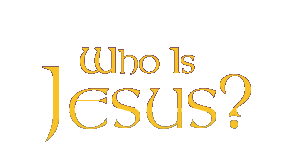by Martin G. Collins
Forerunner,
"Bible Study,"
August 1, 2002
The Pharisees fasted often, regularly twice a week, besides the great national days of fasting. They also fasted while in mourning. This was the established custom of the land. As a result, John the Baptist's disciples—who fasted frequently like the Pharisees—wanted to know why Jesus, in contrast, did not require His disciples to fast.
Christ replies to them with three illustrations, all of which make the same point: that in everything our beliefs and actions should be correct and appropriate to God's way of life. The parable found in Matthew 9:14-17 (also Mark 2:18-22; Luke 5:33-39) expresses the importance of our commitment to the pure doctrines of Jesus Christ.
1. Why did Christ's disciples not fast like the Pharisees? Matthew 9:14-15; Luke 18:9-14; Acts 13:1-3; 14:23.
Comment: Jesus' first illustration comes from marriage customs of the time. The bridegroom's friends would not think of fasting while he was with them. For them, it was a time of festivity and rejoicing—mourning was not appropriate. When the bridegroom left them, their festivities would end, and the proper time for fasting and sorrow would begin.
While Christ, the Bridegroom, was with His disciples, it was a time for joy. Expressing grief by fasting would have been inappropriate at that time. In addition, since Jesus was with them, they had no need to draw closer to Him through fasting. After Christ died, the disciples fasted when appropriate.
2. What do the cloth and old garment represent? Matthew 9:16; II Corinthians 5:17; Ephesians 4:22; Colossians 3:8-9.
Comment: Jesus' second illustration derives from a well-known fact: No one with a reasonable amount of experience in mending clothes would waste a piece of new cloth to repair an old garment. If new cloth is used to patch an old garment, and the patch becomes wet, it shrinks as it dries and puts strain on the old garment. The tear becomes worse than it was.
Jesus is showing that His "new" doctrines do not match the old rites of the Pharisees, which required a lot of fasting. If His "new" doctrines were attached to their old ones, it would distort the truth. Christ is preaching against syncretism, the mixing of beliefs. We must completely replace the old human way of life with the new godly way of life. Because God's "new" way is righteous and spiritually strong, it cannot be combined with the "old" wicked and weak human way of life. They are incompatible.
3. What do the new wine and old wineskins represent? Matthew 9:17; Joshua 9:3-5.
Comment: Jesus' third illustration derives from wine bottling. In those times, "bottles" were made of animal skins—sheep, goat, or ox—and, after being properly prepared, filled with wine or water. These skins came in various sizes—an ox-skin held as much as 60 gallons. Horses and camels could carry glass or ceramic bottles or wooden kegs only with difficulty, but two skins tied together and laid across a beast's back could be carried a long distance. After a time, an animal skin became brittle and ruptured easily. New wine put into an old skin would ferment, expand, and burst them open. New skins, however, were strong enough to stretch without bursting.
Christ's illustration suggests that there is a wise and proper way to do things. It was not fitting to mix His doctrines with the old and corrupt doctrines of the Pharisees. To take God's truth and try to press it into some other form would change it into a lie, making the truth of God useless.
4. How do these three illustrations relate? Matthew 24:4-5, 24; Romans 6:5-6; 16:17-18; Galatians 1:6-10; Ephesians 4:14; 5:6-11; I Timothy 6:3-5; Hebrews 13:9.
Comment: The new wine represents the inner aspects of a Christian life, and the new cloth pictures outward conduct and conversation. A person's behavior reflects his commitment, seen in the illustration of attaching new cloth to old clothing. The old clothing—our sinful, selfish life—cannot be mended but must be replaced. The new cloth is a righteous life. The Pharisees' ritual fasting was an old garment for which a new piece of cloth was useless.
It is untenable to attach Christ's doctrine to the old corrupt doctrines of this world's religions. The righteous system Christ came to establish cannot be forced into an old system. To attempt to force His teachings into the ways of Judaism, Protestantism, Catholicism, or any other of this world's religions causes confusion. Christ is warning against syncretism of beliefs; it simply does not work.
Our Savior teaches that life cannot be a mixture of two opposite principles. We cannot serve two masters (Matthew 6:24). We cannot trust in our own works for salvation in Christ, nor follow the world and God. His new way must completely replace our old worldly ways so that we walk in newness of life.

